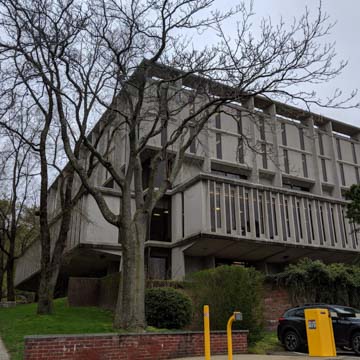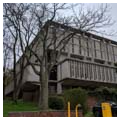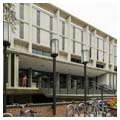By the time of the seven-story Rockefeller Library (in campus lingo, “The Rock”), with three floors sunk into the slope of College Hill and four out of it, stacks were placed on warehouse floors for flexibility, which is denied by the metal and glass structure built into the Hay Library. The thin formality of the Rock's symmetry, with an approach on broad stairs to the equivalent of a classical stylobate, all treated as “floating slabs” in a manner which Ludwig Mies van der Rohe developed, proclaims it as typical of the 1960s revival of traditional neoclassical monumentality. There is here the same compromise between modernism and neoclassicism which also appears in Philip Johnson's List Art Building ( PR85) across the street.
You are here
John D. Rockefeller, Jr., Humanities Library
If SAH Archipedia has been useful to you, please consider supporting it.
SAH Archipedia tells the story of the United States through its buildings, landscapes, and cities. This freely available resource empowers the public with authoritative knowledge that deepens their understanding and appreciation of the built environment. But the Society of Architectural Historians, which created SAH Archipedia with University of Virginia Press, needs your support to maintain the high-caliber research, writing, photography, cartography, editing, design, and programming that make SAH Archipedia a trusted online resource available to all who value the history of place, heritage tourism, and learning.




